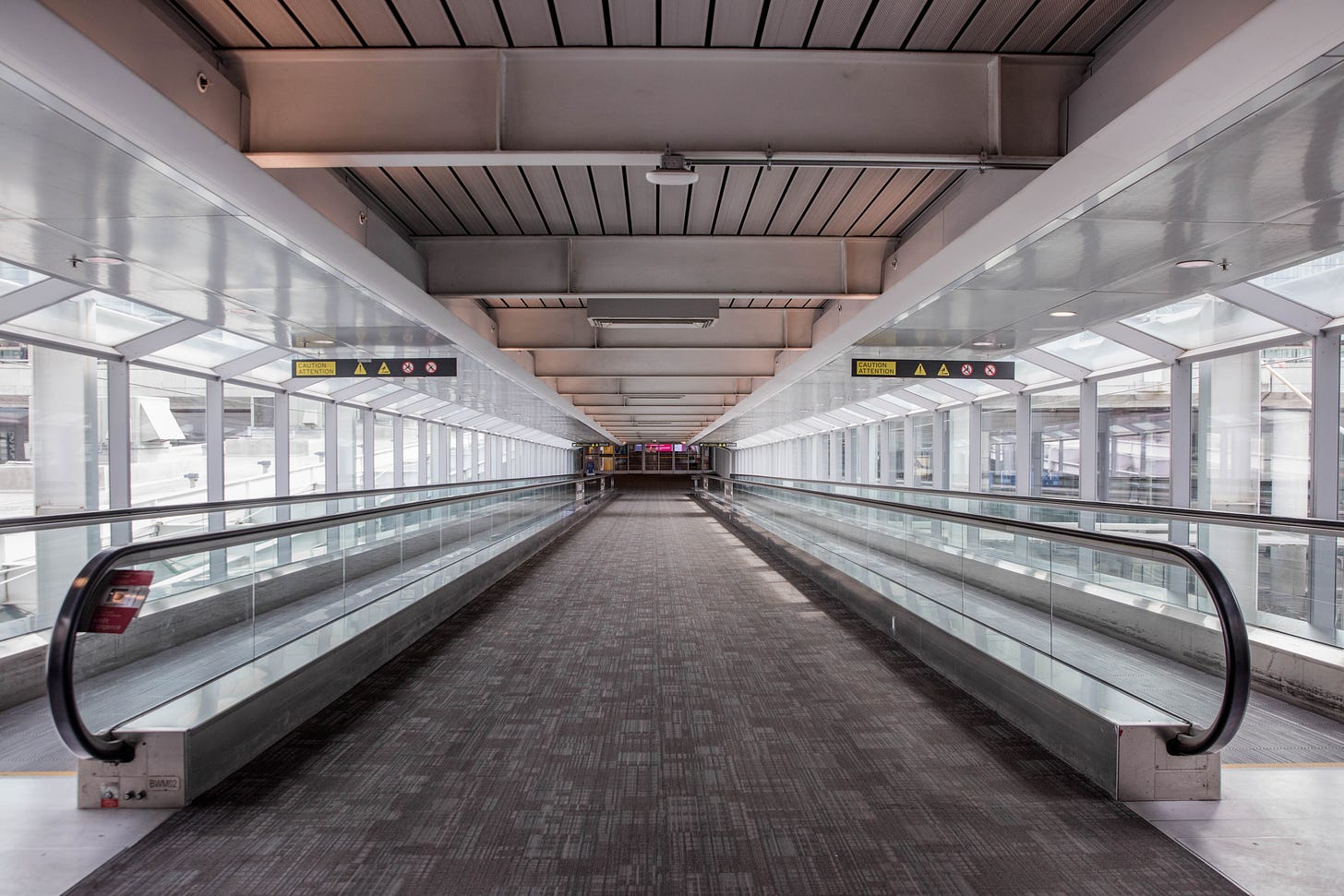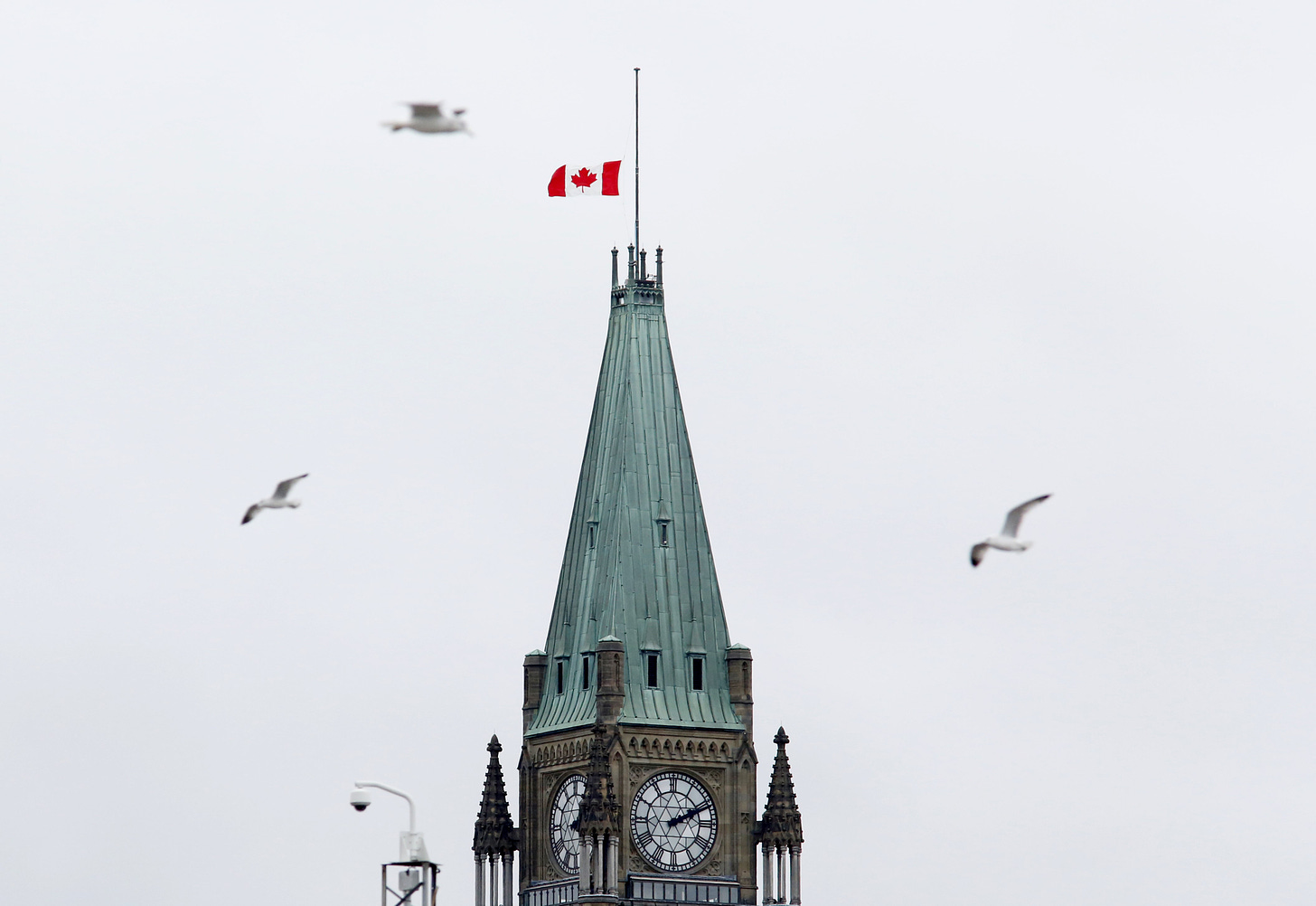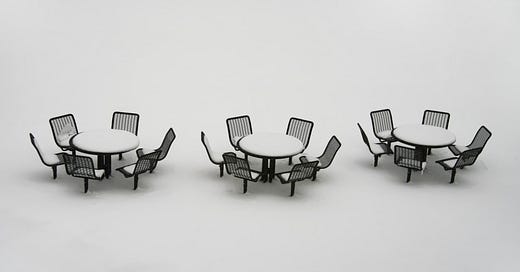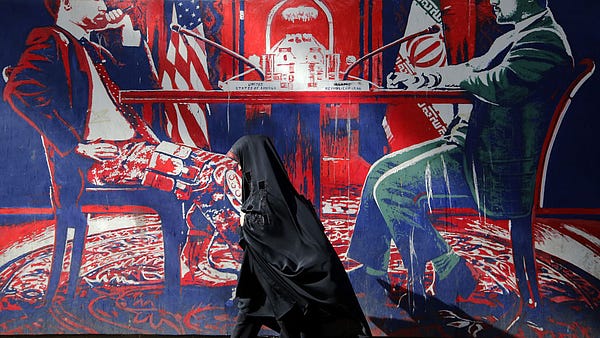
The Free Press

On September 7, Margaret Marsilla called Joshua Tepper, the doctor who planned to kill her son.
Marsilla is 46, and she lives outside Toronto with her husband and daughter, a nursing student. She had known that her 23-year-old son, Kiano Vafaeian, was depressed—he was diabetic and had lost his vision in one eye, and he didn’t have a job or girlfriend or much of a future—and Marsilla asked her daughter to log onto Kiano’s account. (Kiano had given his sister access so she could help him with his email.) He never shared anything with his mother—what he was thinking, where he was going—and Marsilla was scared.
That was when Marsilla learned that Kiano had applied and, in late July, been approved for “medical assistance in dying,” aka MAiD, aka assisted suicide.
His death was scheduled for September 22.
In a September 7 email from Tepper, the doctor, to Kiano and Tekla Hendrickson, the executive director of MAiDHouse, the Toronto facility where Kiano’s death would take place, Tepper mapped out the schedule:
“Hii,” he emailed. (Apparently, Tepper did not use spell check.) “I am confirming the following timing: Please arrive at 8:30 am. I will ask for the nurse at 8:45 am and I will start the procedure at around 9:00 am. Procedure will be completed a few minutes after it starts.”
The procedure entailed administering two drugs. First, a coma-inducing agent. Then, a neuromuscular blocker that would stop Kiano’s breathing. He would be dead in five to ten minutes.
Apparently, Kiano wanted to bring a dog with him. In an email to him that same day, Hendrickson said: “Dogs are welcome in the space as long as there is someone there who will be responsible for them during the time at MAiDHouse.”
Marsilla was terrified. She had tried to do everything for her son, but it had been rough for him. She and his dad had gotten divorced when Kiano was still a kid. On his sixteenth birthday, she had given him a BMW. When he was 17, he had been in a bad car accident. He wasn’t up to college. He smoked a ton of weed. He’d lived with his dad, then with his mom, and now with her sister, Kiano’s aunt.
Wherever he went, whatever he did—he was unhappy. Going blind in his left eye, this past April, was the tipping point.
The day after she discovered the email, Marsilla called Tepper. She pretended to be a MAiD applicant. She called herself Joann and said she “wanted to go through the whole process in general, from A to Zed, before the Christmas holidays—if you know what I mean.” Tepper indicated he understood.
Tepper, sounding matter of fact, ran through the list of requirements: “You have to be over 18. You have to have an OHIP card.” (He was referring to her Ontario Health Insurance Plan.) “You have to have suffering that cannot be remediated or treated in some way that’s acceptable to you.”
Marsilla, who recorded the conversation and shared the five-and-a-half-minute recording with Common Sense, told Tepper that she was diabetic and blind—more or less, her son’s condition. Tepper said he’d “had patients a lot similar to you.”
Then, the doctor said, “If you wanted, I could do a formal assessment with you.” Marsilla asked if she should come in. Tepper replied: “We do them remotely, often by video of some type: WhatsApp, Zoom, FaceTime, something like that.”
A few minutes later, Marsilla hung up. She had just over two weeks to stop her son from dying.
‘Poised to Become the Most Permissive Euthanasia Regime in the World’
When we think of assisted suicide or euthanasia, we imagine a limited number of elderly people with late-stage cancer or advanced ALS in severe pain. The argument for helping them die is clear: Death is imminent. Why should they be forced to suffer?
In 2015, Canada’s Supreme Court ruled that assisted suicide was constitutional. In June 2016, Parliament passed Bill C-14, otherwise known as the Medical Assistance in Dying Act. MAiD was now the law of the land. Anyone who could show that their death was “reasonably foreseeable” was eligible. In this respect, Canada was hardly alone: The Netherlands, Switzerland, Belgium, Spain, Australia, and New Zealand, among others, allow assisted suicide. So do ten states in the U.S.
In 2017, the first full year in which MAiD, which is administered by provincial governments, was in operation, 2,838 people opted for assisted suicide, according to a government report. By 2021, that figure had jumped to 10,064—accounting for more than 3 percent of all deaths in Canada that year.
There have been a total of 31,664 MAiD deaths and the large majority of those people were 65 to 80 when they died. In 2017, only 34 MAiD deaths were in the 18- to 45-year-old category. In 2018, that figure rose to at least 49. In 2019, it was 103; in 2020,118; and in 2021, 139.
Today, thousands of people who could live for many years are applying—successfully—to kill themselves.
Indeed, in some Canadian provinces nearly 5 percent of deaths are MAiD deaths. In 2021, the province of Quebec reported that 4.7 percent of deaths in the province were due to MAiD; in British Columbia, the number was 4.8 percent. Progressive Vancouver Island is unofficially known as the “assisted-death capital of the world,” doctors told me.
Why the dramatic increase? Over the past few years, doctors have taken an increasingly liberal view when it comes to defining “reasonably foreseeable” death. Then, last year, the government amended the original legislation, stating that one could apply for MAiD even if one’s death were not reasonably foreseeable. This second track of applicants simply had to show that they had a condition that was “intolerable to them” and could not “be relieved under conditions that they consider acceptable.” This included applicants like Margaret Marsilla’s son, Kiano.
In 2023, those numbers are almost certain to rise.
Next March, the government is scheduled to expand the pool of eligible suicide-seekers to include the mentally ill and “mature minors.” According to Canada’s Department of Justice, parents are generally “entitled to make treatment decisions on their children’s behalf. The mature minor doctrine, however, allows children deemed sufficiently mature to make their own treatment decisions.” (The federal government does not define “mature,” nor does it specify who determines whether one is mature. On top of that, the doctrine varies from one province to another.)
Dr. Dawn Davies, a palliative care physician who supported MAiD when it was first conceived, said she had “tons of worries” about where this might lead. She could imagine kids with personality disorders or other mental health issues saying they wanted to die. “Some of them will mean it, some of them won’t,” she said. “And we won’t necessarily be able to discern who is who.”
Hugh Scher, an attorney advising Margaret Marsilla, told me: “While other countries have explored extending assisted suicide to minors, those governments have insisted on substantial safeguards, including parental notification and consent. Canada is poised to become the most permissive euthanasia regime in the world, including for minors and people with only psychiatric illness, having already removed the foreseeability of death or terminal illness as an essential condition to access euthanasia or assisted suicide.”
Dr. Ellen Warner is an oncologist at the prominent Sunnybrook Research Institute, in Toronto, and a professor at the University of Toronto’s medical school. “My objection to MAiD, from day one, was that there was no way we would be able to avoid this slippery slope, because these aren’t black and white cases,” she said. “I’m 100 percent against MAiD. I’m an old-fashioned Hippocratic Oath kind of doctor.”
But Dr. Derryck Smith, a psychiatrist at the University of British Columbia, views the rise in MAiD deaths as progress. (Smith never took the Hippocratic Oath, he said, because he thought it was “archaic.”) “MAiD is about relieving suffering, respecting human dignity, and recognizing the inherent right for individuals to make decisions affecting their health and even their death,” Smith told me. Assisted suicide, he pointed out, had been happening for ages. “Before MAiD, patients who were going to die were assisted along the way with high doses of narcotics,” he said. “The rationale was to ‘make people comfortable.’”

‘The New Social Safety Net’
Many of the people thinking about killing themselves in Canada are relieved that the government has made it easier to die.
“The nightmares have always been a problem,” Mitchell Tremblay, 40, told me. “Since I was six-years-old, when my cousin molested me.” I’d found Tremblay on Twitter. He had a small following, but he was active in #MAiD circles.
Tremblay was MAiD-curious. The MAiD-curious were lonely and scared, and they had coalesced into a growing, online community, mostly on Twitter and Facebook, and through the spread of death cafés. There were more than 1,300 death cafés in Canada and 14,000 worldwide. In the beginning, in 2012 or 2013, people mostly met in other people’s homes to talk about the emotional and philosophical complexities of death. They ate cake and had coffee or tea. Since then, the number of virtual cafés had grown considerably. (There was also an expanding constellation of end-of-life doctors and “death doulas.” Karry Sawatsky, a death doula at MAiDHouse, where Kiano Vafaeian was scheduled to die, is described on the MAiDHouse website as believing that “end-of-life planning leads to a meaningful and transformational experience.”)
Tremblay was from outside Toronto, and he had been homeless, off and on, for more than two decades. He had spent years in and out of psychiatric facilities. He had prostituted himself, and he’d done tons of drugs, and he’d shuttled between dingy apartments and halfway houses. For now, he had a place to live, but he expected to be evicted by spring. He planned to apply for MAiD as soon as it opened up to the mentally ill, in March 2023.
“MAiD is going to give me dignity,” Tremblay said. “I need to go now, because I know it’s gonna get worse.”
Les Landry, 65, said he was in the middle of filling out his MAiD application. He was from Medicine Hat, Alberta, in the middle of nowhere, several hours southeast of Calgary and a little north of the Montana line. He received $1,238 every month from the government, but he was always short on cash. He said he’d been abused by his mother when he was four—she put his hand through the wringer of an old-fashioned washing machine. He’d suffered from PTSD, and he’d had three strokes, and he suffered from epilepsy, he said.
Like Tremblay, he was also active on Twitter.
“There’s a tipping point where you can’t afford to live,” Landry told me. “MAiD is the new society safety net.”
That was how Victoria and Joan Cowie saw things, too. (Victoria and Joan had become online friends with Landry and Tremblay.)
Victoria, 21, was a third-year engineering student from LaSalle, Ontario, on the other side of the river from Detroit. She suffered from epilepsy—including frequent seizures—and she had anemia, and she was getting three or four iron infusions intravenously every week. She also took care of her mother, Joan, 53, who was battling ovarian cancer and had been confined to a wheelchair by Guillain-Barré syndrome, a neuromuscular disease.
Both women received disability support from the provincial government, in Toronto—that brought in $1,361 every month. After paying rent and utilities, they usually had a little more than $70 to pay for food.
Sometimes, people would send them groceries or other essentials via Amazon Wishlist; sometimes, they’d get some canned goods at local food banks. Often, they’d get by on only one meal a day.
In May, Victoria took a hard look at their budget. They couldn’t go on like this for long. “Mom,” Joan recalled Victoria telling her, “I don’t think we can survive. We have to apply for MAiD.”
Few Options for Living With Dignity
It had not been lost on government officials that MAiD could save them a good bit of money.
In October 2020, the Office of the Parliamentary Budget Officer issued a report stating that MAiD would cut healthcare costs by over $66 million. In 2017, Aaron Trachtenberg, a research fellow and a doctor at the University of Manitoba, and Braden Manns, a health economist and nephrologist at the University of Calgary, published a paper predicting that MAiD could slash healthcare costs by as much as $100 million yearly.
“I do worry MAiD is an easy solution to bed shortages and the terrible lack of resources patients are facing,” Dr. Ramona Coelho, a family physician in a suburb of Toronto, told me. She added that “the perverse disincentive that exists for administrators and governments with providing MAiD rather than care and resources to live can present a real danger to the lives of vulnerable or marginalized persons.”
Coelho’s comments jibed with a 2021 letter, from three UN officials to the Canadian government, about MAiD having “a potentially discriminatory impact on persons with disabilities and older persons who are not at the end of their life or nearing death from natural causes.” The letter added that “there is a real risk” that those “who may be further marginalized by their racialized, indigenous, gender identity or other status, will be more vulnerable to being induced to access MAiD.”
Dr. Sonu Gaind, a professor of psychiatry at the University of Toronto and a former president of the Canadian Psychiatric Association, said the expansion of MAiD was “built on a house of cards.”
“While pretending to provide MAiD for an irremediable condition, we actually end up taking the lives of non-dying people—who could get better—for all sorts of other psychosocial suffering,” Gaind told me. “That’s not compassion.”
He added: “When we have people who are genuinely suffering, and we don’t provide them options for dignified living, but we provide them with what we label as a painless death, it provides these people with the enticement of a means to escape their suffering, when we could have helped them escape otherwise—by overcoming their problems and moving on and living.”
Nor, Gaind said, is expanding MAiD about personal autonomy—at least, not for everyone. In a recent article, he wrote: “It is a myth that expanded MAiD is just about autonomy. Expansion may increase privileged autonomy for some to die with dignity, but it does so by sacrificing other marginalized Canadians to premature deaths for escaping painful lives that we failed to allow them to live with dignity.”

When the Doctor Gives Your Son a Gun
On September 8, the day after Margaret Marsilla called Joshua Tepper, she took to Facebook to post about her son. “Can you F….. believe it!!! The doctor literlly has given him the gun to kill himself,” Marsilla wrote.
Dr. Kristen Creek, in Winnipeg, messaged her. As it turned out, Creek was a family physician, and she provided MAiD. She was surprised to hear that a young man with diabetes had been approved for it. She urged Marsilla to call Tepper back and be up front about who she was.
Marsilla did just that. Soon after, Marsilla, Kiano, Kiano’s aunt, and Tepper spoke on the phone. That call led nowhere, Marsilla said. By now, a right-wing, Canadian Catholic news site had picked up on Marsilla’s post, which mentioned Tepper by name, and the doctor was getting pummeled by outraged readers.
On September 16, Tepper texted Marsilla to say that he’d postponed Kiano’s death until September 28. Five days later, the doctor texted her again to say that, actually, he wasn’t going through with it. He apparently wanted nothing more to do with Kiano Vafaeian.
Last week, after repeatedly trying to connect with Kiano, I managed to FaceTime with him. He had a dark beard and mustache, and special goggles to make it easier for him to see (he pushed those up onto his forehead during our conversation). He said he’d applied for MAiD a few years back, and then dropped it, and then thought about trying again. Then, in May, after learning that his eyesight was only going to get worse, he decided he did, in fact, want to die.
“I was so ready,” he said. “I was actually very looking forward to ending my pain and suffering.” He hated not being able to see. The unhappiness was exhausting. He was arrested for assaulting his father and, another time, for indecent exposure, which he blamed on some hallucinogenic drugs he’d been microdosing. “I tried to do as much as I can,” he explained, “and, hopefully, in doing so, I might come across something or someone that could change my mind.” He meant about dying. But his mind remained unchanged. He wanted to go.
“My thoughts are that I would be closer to God,” he said. He was doing this, he declared, for himself, and for his family.
Kiano told me he was “baffled” by everything that had happened the past three weeks: his mother’s social-media campaign, Tepper’s decision not to help him die. “I didn’t know what to say,” Kiano said. “It’s how she knows how to love me.”
Still, he was furious with her. He didn’t know what came next, whether he’d find another doctor. The MAiD people didn’t want to touch his case.
On Facebook, he posted a screenshot of a series of texts between him and his mom (which he has since deleted).
“KIANO I love u,” Marsilla wrote.
“No you don’t,” he wrote back. “You were adding to my pain and suffering, and for that I curse you.”
“I love u And I want to talk to u,” Marsilla wrote.
After a moment, he texted back: “You know what I need.”
Rupa Subramanya’s last piece for us was about the lack of scientific basis for Canada’s travel ban during Covid. Read it here.
If you are having thoughts of suicide, call the National Suicide Prevention Lifeline at 1-800-273-8255 (TALK) or go to SpeakingOfSuicide.com/resources for a list of additional resources.














Suggested reading: All My Puny Sorrows by Miriam Toews, a fictional chronicling of the real life struggle and eventual and death by suicide of her sister after a lifetime of crippling depression. After years of begging her family members to support her in a trip to Switzerland where she could have a medically supported death (this was refused), she ended her life by lying down on the railway tracks in Winnipeg.
Keeping someone alive against their will is not always the kindest or the most ethical choice.
*Edited to add: the book is beautifully written and laugh out loud funny in places. POI - Toews is also the author of the brilliant “Women Talking”, adapted for the screen last year.
"The Fifth Estate" did a follow up on Kiano Vafaeian (CBC Gem documentary season 48 "A Complicated Death", first aired January 19, 2023, and available to stream). 45 minutes long; Kiano starts at 1 minute 50 seconds.